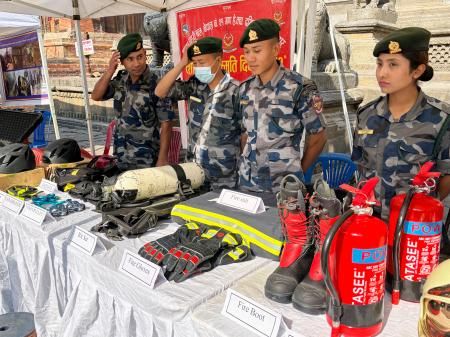A Decade After: Nepal Earthquake's Impact - A Nation's Resilience and Ongoing Challenges
Ten years ago, on April 25th, 2015, a devastating 7.8 magnitude earthquake struck Nepal, leaving an indelible mark on the nation. The catastrophe, followed by a powerful aftershock, claimed thousands of lives, leaving countless more injured and displaced. This article examines the long-term impact of the Nepal earthquake, exploring the progress made in recovery, the challenges that persist, and the lessons learned for disaster preparedness and resilience.
The Scars Remain: A Look Back at the Devastation
The 2015 Nepal earthquake was a catastrophic event, causing widespread destruction across the country, particularly in Kathmandu and the surrounding areas. The immediate aftermath was characterized by:
- Massive loss of life: Over 9,000 people perished, with thousands more injured.
- Widespread infrastructure damage: Historic temples, schools, hospitals, and homes were reduced to rubble. The UNESCO World Heritage sites in Kathmandu Valley suffered significant damage.
- Displacement and homelessness: Hundreds of thousands were left without shelter, forcing them into temporary settlements and exacerbating existing inequalities.
- Economic disruption: The earthquake severely hampered Nepal's already fragile economy, impacting tourism, agriculture, and infrastructure development.
Beyond the Numbers: Human Stories of Resilience
While the statistics paint a grim picture, the earthquake also revealed the remarkable resilience of the Nepali people. Stories of survival, community support, and the tireless efforts of rescue workers and volunteers emerged from the rubble, highlighting the strength of the human spirit in the face of adversity. [Link to a relevant news article showcasing human resilience].
Reconstruction and Recovery: Progress and Ongoing Challenges
The decade following the earthquake has witnessed significant progress in reconstruction efforts. International aid poured in, supporting initiatives focused on:
- Housing reconstruction: Millions of homes have been rebuilt, though challenges remain in accessing aid and ensuring quality construction in remote areas.
- Infrastructure development: Roads, bridges, and schools have been repaired or rebuilt, improving connectivity and access to essential services.
- Economic recovery: Tourism has gradually rebounded, although it still faces challenges. Efforts to diversify the economy continue.
However, substantial challenges persist:
- Incomplete reconstruction: Many communities are still struggling to fully recover, particularly those in remote mountainous regions. Access to aid and resources remains limited in certain areas.
- Economic disparities: The earthquake exacerbated existing inequalities, widening the gap between the rich and the poor. Many vulnerable communities lack access to basic necessities.
- Vulnerability to future disasters: Nepal remains highly vulnerable to earthquakes and other natural hazards. Investing in disaster preparedness and risk reduction remains crucial.
The Role of International Aid and Development
The international community played a significant role in Nepal's post-earthquake recovery. Various organizations and governments provided financial assistance, technical expertise, and humanitarian aid. [Link to a report on international aid efforts]. However, questions remain about the effectiveness and transparency of aid distribution, highlighting the need for improved coordination and accountability.
Lessons Learned and Future Preparedness
The 2015 Nepal earthquake served as a stark reminder of the devastating impact of natural disasters and the importance of preparedness. Key lessons learned include:
- Strengthening building codes and enforcing regulations: Improved construction practices are vital to minimizing future damage.
- Investing in early warning systems: Effective systems for predicting and responding to earthquakes are essential.
- Community-based disaster preparedness: Empowering communities to participate in preparedness planning and response is crucial.
- Long-term recovery planning: A comprehensive and sustained approach to recovery is necessary to ensure lasting resilience.
Nepal's journey toward full recovery continues. While significant progress has been made, ongoing challenges necessitate a commitment to long-term investment, community engagement, and a strengthened focus on disaster preparedness to build a more resilient future.
Call to Action: Learn more about organizations supporting Nepal's ongoing recovery efforts and consider making a contribution to help communities rebuild their lives. [Link to relevant organizations].
